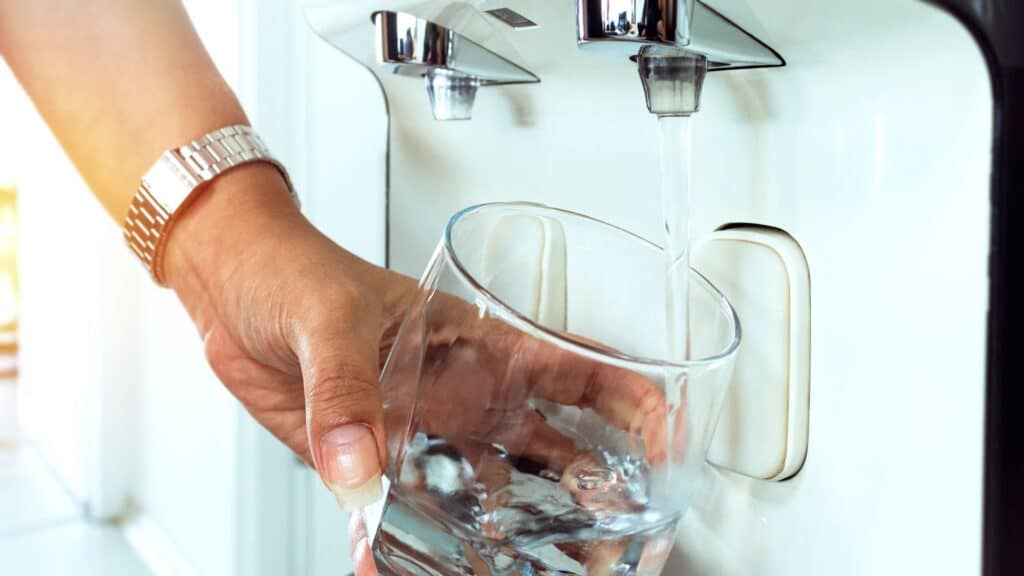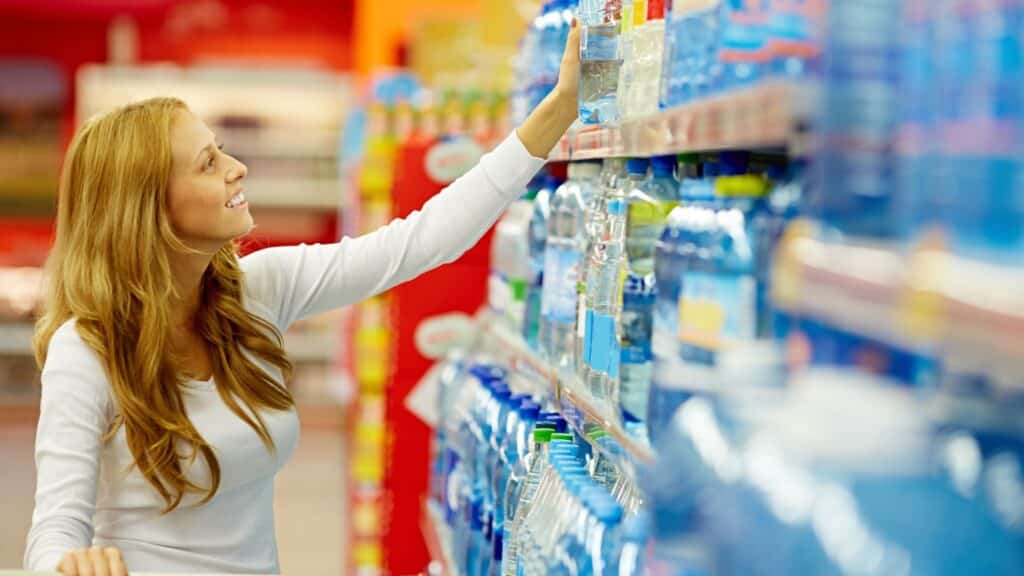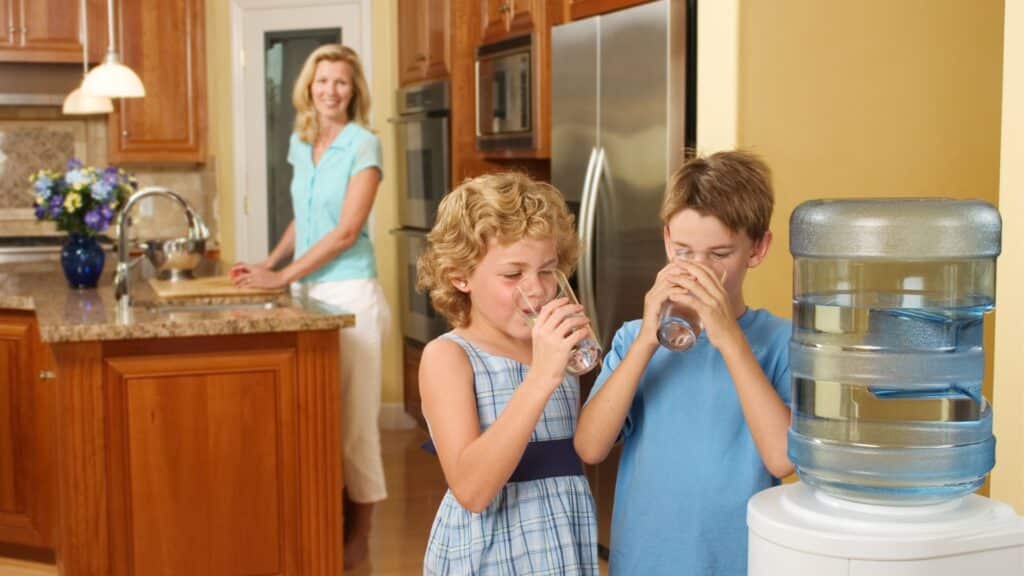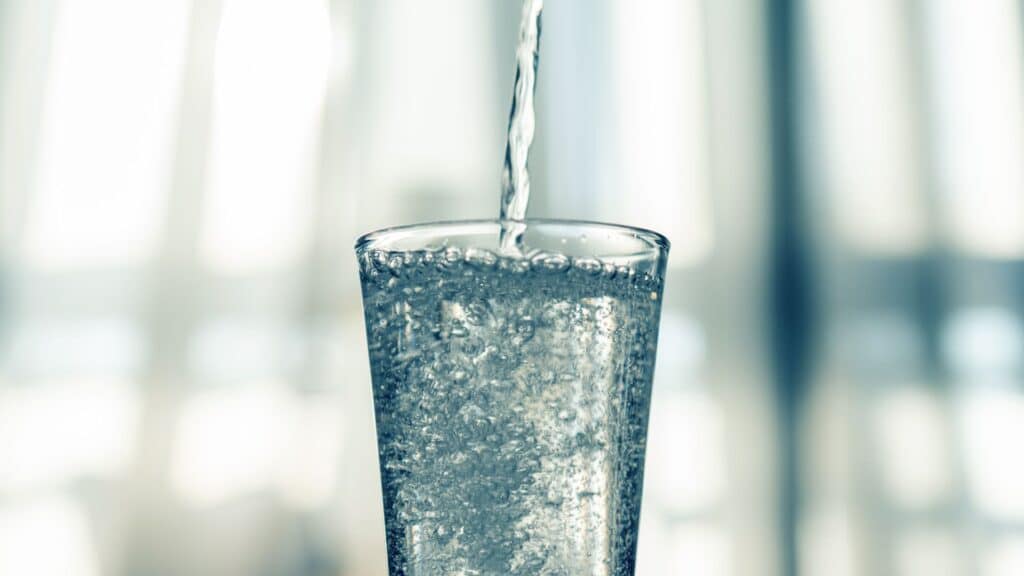Every caregiver and parent’s dream is to provide only the best for their child, including the water they use to mix baby formulas. So, it’s only normal to have several questions when looking for the best drinking water. But how do you know which is the right one?
Out of all the baby water sources available these days, bottled water, tap water, and purified water are at the top of every parent’s list. But what makes them different from the others?
This article will discuss everything you need to know about these types of water sources, the different factors that set them apart, and other alternative sources that you might also want to consider. So, if you want to learn more, then continue reading!

Bottled Water: Basic Information
Bottled water is an excellent alternative to tap water, especially if the area has contamination cases in the water supply. Many types of bottled water are available in the market today:
- Mineral Water: Mineral water is excellent for drinking water, especially if you have babies. It primarily contains natural minerals that are essential to your baby’s growth.
- Fluoridated Water: Fluoridated water is another water bottle option you can consider when making baby formula. Although it contains adequate fluoride for kids and adults, it may be too much for your baby’s dental health.
- Distilled Water: Distilled water is another option that you can consider for your bottled water supply. Out of all the options on the list, distilled water goes through the most series of water treatment procedures, especially if compared to community water systems.
Tap Water: Basic Information
Tap water primarily comes from a piped water supply, which you can find everywhere– from the water you get from the kitchen sink or the one you use to clean dishes in your dishwasher.
Although many people tend not to consider tap water safe for mixing baby formula, tap water goes through a series of filtration methods, making it safe to drink [1].
However, there may be times when the water supply can get damaged for various reasons (ex., accidents, natural calamities, etc.). When this happens, there’s a considerable chance that it might turn the supply into contaminated water, affecting your health.
Also, pesticide residue and other chemicals may seep into the baby water supplies unnoticed. So, if you’re worried about it, you can always install a home filtration system to make your drinking water safer.
Purified Water: Basic Information
Purified water is either groundwater or tap treated to eliminate various harmful substances such as viruses, parasites, and bacteria. Thus, ensuring that your drinking water is safe to consume.
Like other water filtration processes, water purification is an excellent choice for areas with untreated or contaminated water. So, you can guarantee that the water you get from your kitchen sink is safe.
But since almost every substance is eliminated from the purification process, you might also miss out on some natural minerals that may already be present in the water supply. So, you might not get the proper minerals your body needs.

How to Determine if You Need to Boil Water
There are times when community water systems can get contaminated. When this happens, the water quality drastically drops, and your water system will become prone to harmful contaminants, which may only put your family at risk.
At times like these, installing a few effective water purification methods, such as reverse osmosis, can do the job. But what if that option has yet to be available?
Boiling water is one of the most effective ways to purify water and remove any potentially harmful trace contaminants. But how do you know if it’s the right time to do it?
Factors When to Boil Water
Many factors can help you determine whether you need to boil the baby water. Here are a few of them.
- Appearance: Does your water supply appear dark and murky? There’s a chance that your water access has already been contaminated. Various chemicals and pathogens can cause water contamination in the community water system. Remember that potable drinking water should be clear and transparent. So, if it appears cloudy or murky, it’s best to get bottled water instead.
- Texture: Another way to determine if it’s unsafe to consume tap water is by its texture. Tap water should be smooth and fluid. Consuming tap water with a slimy texture could mean that there are particular chemicals in the water, making it unsafe for human consumption.
- Smell: Besides the texture and the appearance, another factor you need to watch out for is the smell. Clean water should be free of any unusual or foul odor. For instance, public water systems contaminated with chlorine may have a funky smell. Most tap water goes through multiple processes to improve its quality, but it can still become contaminated. If you detect a chemical smell, the water likely contains trace amounts of chemical compounds.
- Color: Lastly, take a look at the color of the water. Remember that purified water should be transparent. Having any other color might mean that common contaminants are mixed with the water. So, unless you mix it with other substances, such as milk formula, it’s best to choose another type of drinking water.
Essential Factors to Consider When Choosing the Best Drinking Water Source
Now that you’ve learned about the three primary types of drinking water, it’s the perfect time to distinguish which one is best for your needs. So, to help you determine which is the best, here are a few factors that you can consider:
Source of Drinking Water
When buying drinking water for your home, choosing a company or supply source you can trust is always advisable. Remember that although most manufacturers market their drinking water products as sourced from mountain springs or glaciers, verifying if it’s true can be challenging.
Filtration Systems
Another factor you must consider is the filtration systems used to produce purified water. The World Health Organization says that many types of water filtration systems are available to filter public water. So, if you want to be sure that you’re consuming safe drinking water, then check the label and see if the manufacturer is following the drinking water standards.

Different Water Filtration Systems
Boiling water may be the easiest way to purify water. But did you know that many countries use various types of water filtration systems to ensure water quality? Let’s take a closer look at a few of them.
Water Purification
One of the most popular ways to remove impurities is through water purification. What’s great about it is that you can easily install one at home without spending thousands of dollars. The water goes through several processes to ensure that you effectively remove all the harmful contaminants and bacteria in the water, making it safe for consumption.
Water Chlorination
Water chlorination is one of the oldest forms of water purification. It utilizes mild bleach that contains at least 5% chlorine mixed with water. Unlike other filtered water sources that use various mechanisms, this combination eliminates the contaminants in the water and purifies it.
Reverse Osmosis
Reverse osmosis utilizes a pump that produces high pressure to move the water into the filtration system and a semipermeable membrane. The system filters out the contaminants and produces pure water under pressure. The water is then passed through a carbon filter before it is delivered to the tap.
Iodine Addition
Using liquid iodine is another way to eliminate contaminants from the water. When using liquid iodine, you must ensure that the water is 68 degrees Fahrenheit. However, there are instances where a person can be allergic to iodine. So, choose another way to eliminate the bacteria from your water supply.
Distillation
Another method that you can consider is distillation. This process is commonly used in many areas to treat tap water and ensure it’s safe to drink.
Many consider distilled water the safest option, especially when you have babies. Not only does the process remove any harmful contaminants, but it’s also effective at treating harmful chemicals such as lead.
UV Radiation
UV radiation may be a practical option for areas that get a lot of natural light. Although it’s not as effective as other types of water filtration processes on the list, it can still eliminate harmful bacteria, primarily when regulated. However, combining it with other purification processes is still best to reduce the risks of any adverse effects.
Desalination
Desalination is a unique type of water purification technique that treats seawater by removing its minerals. It’s an effective process to convert seawater into potable drinking water that people can use for consumption and irrigation.
Solar Water Purification
Solar Water filtration is almost identical to UV radiation. But instead of pairing it with another system, you’ll need to use an empty bottle full of water and shake it until it produces oxygen. you’ll then need to leave it horizontally and let it get exposed to the sun.
The process will eventually kill the bacteria found in the water. Although it’s not as effective compared to other methods. You might find it useful, especially when you’re outdoors without access to potable drinking water.
Clay Vessel Filtration
Another old method of water purification is by using clay vessels. Clay vessels can trap dust, mud, and other impurities to produce drinkable baby water.

When Should You Get Your Water Tested?
Areas without access to regulated water should have their water tested. You’ll never know when a potential contamination might happen at any time. So, a water test is highly advisable to determine if any coliform bacteria exist.
You can also consider running tests to check the pH level of the water and its dissolved solids. Lastly, it’s equally important to check your water supply for any chemical contaminants, especially if there have been reports of contaminated cases in the nearby rivers and lakes. Any chemical or fuel spills can affect your water supplies. Thus, increasing the risk of infection.
You may coordinate with your local health department to learn the most recent tests performed in your area. If it’s not an option, then requesting a state-certified laboratory should work.
Most testing laboratories have highly advanced equipment to help collect, handle, and preserve water samples. Since these tools are highly technical, a trained technician will analyze and interpret the results directly from your home.
Conclusion
Everyone deserves a clean drinking water supply to keep them healthy. So, whether tap, purified, or any other type of bottled water, it’s always best to ensure they’re safe to drink.
Remember that you and your family deserve a safe drinking water supply. So, always ensure that the water you consume is free from any hazardous waste contamination that might affect your health.
If you have a question about how to use this article, leave us a comment on this page and we will get back to you as soon as possible!



